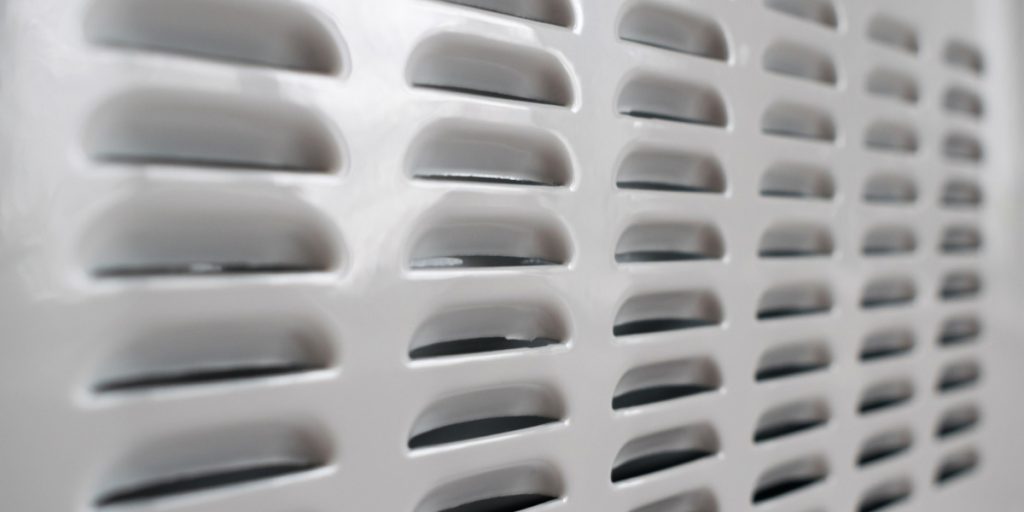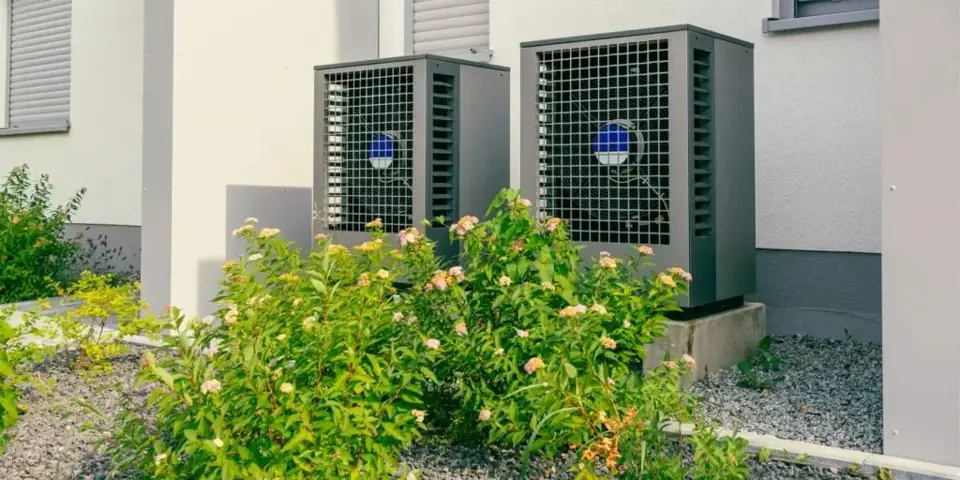In today’s digital world, data centers are the backbone of nearly every business operation. Whether you’re running a small server room or a hyperscale facility, one thing remains constant: the need for reliable, efficient cooling. As servers and networking equipment generate more heat than ever, the challenge of keeping them cool—without breaking the bank—has never been greater.
Two of the most common air delivery approaches in data center cooling are raised floor systems and overhead supply systems. Each method has its own set of advantages, challenges, and ideal use cases. But which is better for your facility? In this in-depth guide, we’ll break down how each system works, compare their pros and cons, and help you make an informed decision for your data center in the San Francisco Bay Area.
Understanding Data Center Cooling Basics
Before diving into the specifics, it’s important to understand why cooling is so critical in data centers. Servers, switches, and storage devices all produce heat as a byproduct of their operation. If this heat isn’t removed efficiently, equipment can overheat, leading to performance issues, hardware failures, and even catastrophic downtime.
The goal of any data center cooling system is to maintain optimal temperature and humidity levels, ensuring equipment longevity and reliability. The two main strategies for delivering cool air to IT equipment are:
- Raised Floor (Underfloor Air Distribution)
- Overhead Supply (Ceiling Plenum or Ducted Supply)
Let’s explore each approach in detail.

Raised Floor Cooling Systems
How Raised Floor Cooling Works
Raised floor systems have been the gold standard in data center design for decades. In this setup, the entire server room is built on a grid of pedestals and floor panels, creating a plenum (open space) beneath the floor. Computer Room Air Conditioners (CRACs) or Computer Room Air Handlers (CRAHs) deliver cold air into this underfloor plenum. Perforated tiles or grilles are strategically placed in front of server racks, allowing cool air to rise directly into the equipment intakes.
Key Components
- Raised access floor panels (typically 12–36 inches above the slab)
- Underfloor plenum for air distribution
- Perforated floor tiles for targeted airflow
- CRAC/CRAH units to supply conditioned air
Pros of Raised Floor Cooling
1. Targeted Air Delivery
Raised floors allow for precise placement of perforated tiles, enabling cool air to be delivered exactly where it’s needed—right in front of high-density racks.
2. Flexible Cabling
The underfloor space can also be used for power and data cabling, keeping the room tidy and reducing trip hazards.
3. Established Best Practices
Raised floor systems are well-understood, with decades of design experience and a wealth of industry standards.
4. Supports Hot/Cold Aisle Containment
It’s easy to implement hot aisle/cold aisle layouts, which further improve cooling efficiency.
5. Easy to Reconfigure
As your data center grows or changes, you can move perforated tiles or add new ones to accommodate new equipment.
Cons of Raised Floor Cooling
1. Height Limitations
Older buildings may not have the ceiling height to accommodate a raised floor, especially if you need a deep plenum for high-density cooling.
2. Airflow Obstructions
Cables, pipes, and other obstructions under the floor can impede airflow, reducing cooling effectiveness.
3. Maintenance Challenges
Accessing underfloor cabling or fixing leaks can be disruptive and time-consuming.
4. Upfront Cost
Installing a raised floor system adds to the initial construction cost, especially in retrofit scenarios.
5. Limited Scalability for High-Density Loads
As server densities increase, the underfloor plenum may struggle to deliver enough cold air, especially in large or high-density data centers.

Overhead Supply Cooling Systems
How Overhead Supply Cooling Works
In an overhead supply system, cold air is delivered from above—either through ductwork, ceiling diffusers, or a ceiling plenum. CRAC/CRAH units push conditioned air into the ceiling space, which then descends into the cold aisles or directly into server racks. Hot air is typically returned via ceiling returns or through dedicated return ducts.
Key Components
- Ceiling plenum or ductwork for air distribution
- Ceiling diffusers or vents for air delivery
- CRAC/CRAH units for cooling
- Hot/cold aisle containment (optional but recommended)
Pros of Overhead Supply Cooling
1. No Need for Raised Floors
This approach is ideal for facilities where installing a raised floor isn’t practical or possible.
2. Easier Maintenance
With no underfloor space to manage, it’s easier to access and maintain cabling and piping.
3. Better for High-Density Loads
Overhead systems can be more easily scaled to deliver large volumes of cold air, making them suitable for modern, high-density data centers.
4. Flexible Airflow Management
Ceiling diffusers and ducts can be adjusted or reconfigured as equipment layouts change.
5. Lower Construction Costs (in some cases)
Eliminating the raised floor can reduce construction costs, especially in new builds.
Cons of Overhead Supply Cooling
1. Airflow Stratification
Cold air naturally sinks, but if not managed properly, it can mix with hot air before reaching the equipment, reducing cooling efficiency.
2. Cabling Management
All power and data cabling must be managed overhead or in cable trays, which can get crowded and require careful planning.
3. Potential for Hot Spots
Without proper containment, hot and cold air can mix, leading to temperature variations and potential hot spots.
4. Retrofitting Challenges
In existing facilities with low ceilings or complex layouts, installing overhead ductwork can be challenging.
5. Less Familiarity
Some data center operators are less familiar with overhead systems, which can lead to design or operational mistakes.
Raised Floor vs. Overhead Supply: Head-to-Head Comparison
Now that we’ve covered the basics, let’s compare these two approaches across several key criteria.
Cooling Efficiency
Raised Floor
When designed and maintained properly, raised floor systems can deliver highly efficient cooling, especially with hot/cold aisle containment. However, airflow obstructions and underfloor congestion can reduce effectiveness.
Overhead Supply
Overhead systems can be just as efficient—sometimes more so—especially in high-density environments. However, they require careful design to prevent air mixing and stratification.
Scalability
Raised Floor
Scalability can be limited by the depth of the plenum and the capacity of the underfloor space to deliver enough air to high-density racks.
Overhead Supply
Overhead systems are generally more scalable, as additional ductwork or diffusers can be added to accommodate growth.
Flexibility
Raised Floor
Moving perforated tiles is relatively easy, but major changes (like adding new rows of racks) may require significant reconfiguration.
Overhead Supply
Ceiling diffusers and ducts can be reconfigured as needed, offering greater flexibility for changing layouts.
Cost
Raised Floor
Higher upfront costs due to the need for a raised floor structure, but may be offset by easier cable management.
Overhead Supply
Potentially lower construction costs, but may require more investment in cable management systems.
Maintenance
Raised Floor
Underfloor maintenance can be disruptive, especially if you need to access cabling or fix leaks.
Overhead Supply
Easier access for maintenance, but overhead cabling can be more challenging to manage.
Retrofit vs. New Build
Raised Floor
Best suited for new builds or facilities with sufficient ceiling height.
Overhead Supply
Ideal for retrofits or buildings where a raised floor isn’t feasible.
Real-World Considerations
Data Center Size and Density
For small to medium-sized data centers with moderate power densities, raised floor systems remain a popular choice. They offer a balance of efficiency, flexibility, and familiarity. However, as server densities increase—especially in colocation or hyperscale environments—overhead supply systems are gaining traction due to their scalability and ability to handle higher heat loads.
Building Constraints
Older buildings or those with low ceilings may not be able to accommodate a raised floor. In these cases, overhead supply is often the only viable option.
Budget and Timeline
If you’re building a new data center from scratch, you have the flexibility to choose either approach based on your needs and budget. For retrofits, overhead supply may be more cost-effective and less disruptive.
Future-Proofing
With the rapid evolution of IT equipment and increasing power densities, it’s important to choose a cooling strategy that can adapt to future needs. Overhead supply systems tend to offer more flexibility for scaling up cooling capacity as your data center grows.
Hybrid Approaches: The Best of Both Worlds?
Some modern data centers are adopting hybrid cooling strategies, combining raised floor and overhead supply systems. For example, you might use a raised floor for cable management and targeted cooling in some areas, while deploying overhead supply for high-density zones. This approach can offer maximum flexibility and efficiency, but requires careful design and coordination.
Hot Aisle and Cold Aisle Containment
Regardless of which air delivery method you choose, implementing hot aisle or cold aisle containment is critical for maximizing cooling efficiency. By physically separating hot and cold air streams, you can prevent mixing, reduce energy consumption, and maintain more consistent temperatures across your server room.
Cold Aisle Containment:
Encloses the cold aisles, ensuring that only cold air reaches the equipment intakes.Hot Aisle Containment:
Encloses the hot aisles, capturing hot exhaust air and directing it back to the cooling units.
Both containment strategies can be used with raised floor or overhead supply systems, further enhancing their effectiveness.
Energy Efficiency and Sustainability
Energy costs are a major concern for data center operators, especially in California where electricity rates are high. Both raised floor and overhead supply systems can be designed for high efficiency, but overhead systems often have an edge in modern, high-density environments.
Key strategies for improving efficiency include:
- Variable speed fans and controls
- Hot/cold aisle containment
- Regular airflow management audits
- Use of economizers and free cooling where possible
Working with an experienced HVAC and refrigeration contractor—like R & R Refrigeration—can help you design and maintain a system that minimizes energy use while maximizing uptime.
Conclusion: Which Is Better for Your Data Center Cooling?
There’s no one-size-fits-all answer to the raised floor vs. overhead supply debate. The best choice depends on your facility’s size, density, budget, and future growth plans. Raised floor systems remain a solid choice for many traditional data centers, offering targeted cooling and easy cable management. Overhead supply systems, on the other hand, are ideal for high-density, scalable environments and retrofits where a raised floor isn’t feasible.
The most important factor is working with an experienced partner who understands the unique challenges of data center cooling in the Bay Area. At R & R Refrigeration and Air Conditioning, we’ve been helping businesses in San Jose, San Francisco, Santa Clara, San Mateo, and Alameda County keep their critical infrastructure cool since 1958.
Ready to optimize your data center cooling?
Contact R & R Refrigeration today for a consultation. Our team of commercial HVAC and refrigeration experts will help you design, install, and maintain the perfect cooling solution for your needs.
Frequently Asked Questions (FAQs) About Data Center Cooling Solutions
Yes, but it depends on your building’s layout, ceiling height, and existing infrastructure. A professional assessment from R & R Refrigeration can help determine the feasibility and cost.
Both systems can be highly efficient when properly designed and maintained. Overhead supply systems often have an edge in high-density environments, but raised floor systems can be very efficient with good airflow management.
Implementing hot/cold aisle containment, regular airflow audits, and proper placement of air delivery tiles or diffusers are key strategies. R & R Refrigeration offers airflow management services to help eliminate hot spots.
With regular maintenance, most commercial HVAC and cooling systems can last 10–20 years. Upgrades and retrofits may be needed as equipment densities increase.
With over 65 years of experience serving the Bay Area, R & R Refrigeration specializes in commercial HVAC and refrigeration solutions tailored to data centers. Our team delivers expert design, installation, and ongoing support to keep your critical infrastructure running smoothly.






